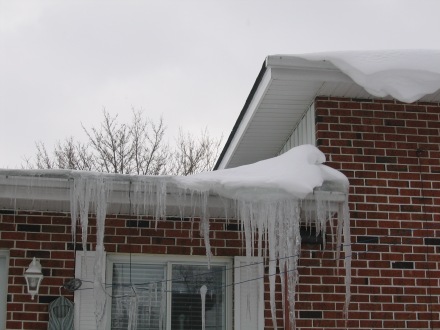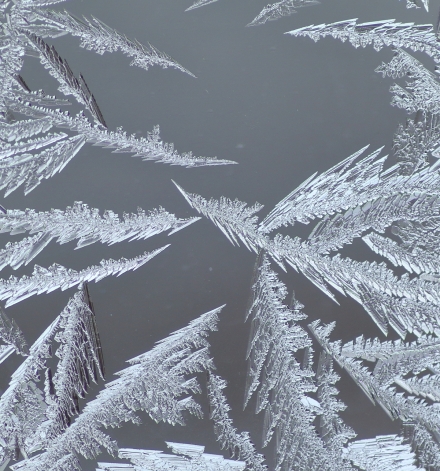That is a curious result that happens. Someone finally invests some serious money in upgrading their kitchen (or bathroom), installing beautiful cabinetry, gorgeous ceiling lights, and finally get the attractive and bright kitchen (or comfortable bathroom) that they always wanted. The following winter, an ice dam forms. The following year, the ice dam gets worse and the ceiling starts to leak after every thaw. What’s going on?
Leaks
The Stack effect and roof leaks
During the month of January, I’ve been called to diagnose roof leaks on an almost daily basis. These leaks have a common characteristic – they show up when it’s cold. That usually signals that there is some form of accumulation of water on the roof, usually behind an ice dam, and that the waterproofing is insufficient to stop the water from forcing its way it. The existence of an ice-dam almost always means that there is excessive transfer of heat to the roof which melts the snow on the upper sections, and the resulting meltwater refreezes on the lower section over the soffits. To reduce this heat transfer, we rely on insulation (to reduce the amount of heat leaking into the attic) and ventilation (to dissipate the residual heat before it melts the snow on the roof). However, there is another player in this game, and it can cancel out the efforts at insulating and ventilating. That player is air leakage.
Frost in Attic
Frost can be beautiful. One of the benefits of poorly insulated windows, at least for small children, is the beautiful lace shapes that form – so delicate and yet so enchanting.
Despite this beauty, there are plenty of places where in a home you do NOT want to see frost forming. Certainly, when found on windows, it is a clear sign that the window is not very good at insulating. Another place where you don’t want to see frost, is inside your attic.
Thermography
What is Thermography?
Thermography is the use of thermal infrared energy emitted by various surfaces to create an image using a camera sensitive to thermal infrared photons. Depending on the camera, sensitivity and resolution, it shows the relative temperature of that surface. Since surfaces differ in the way they radiate thermal energy, it does require some understanding of physics, underlying structure, and device operation to meaningfully extract the information contained in a thermographic image.

Continue reading
Roof Leaks, the “invisible”kind
What’s a “roof leak”?
For most people, a roof is leaking when the ceiling gyproc starts to discolour, or bulge, or when the paint starts to bubble.

This usually happens after a heavy rain, or at the end of winter when the snow is melting off the roof. Yes, those are usually leaks. They are easy to notice and impossible to ignore. However, the sad thing is that the cause of the leak is usually several years in the making, and by the time the leak is noticed, there is lots more damage that has occured. In other words, the apparent and visible leak is preceded by “invisible” leaks that start (often) many years before the leak is apparent. This post is about these invisible leaks.


